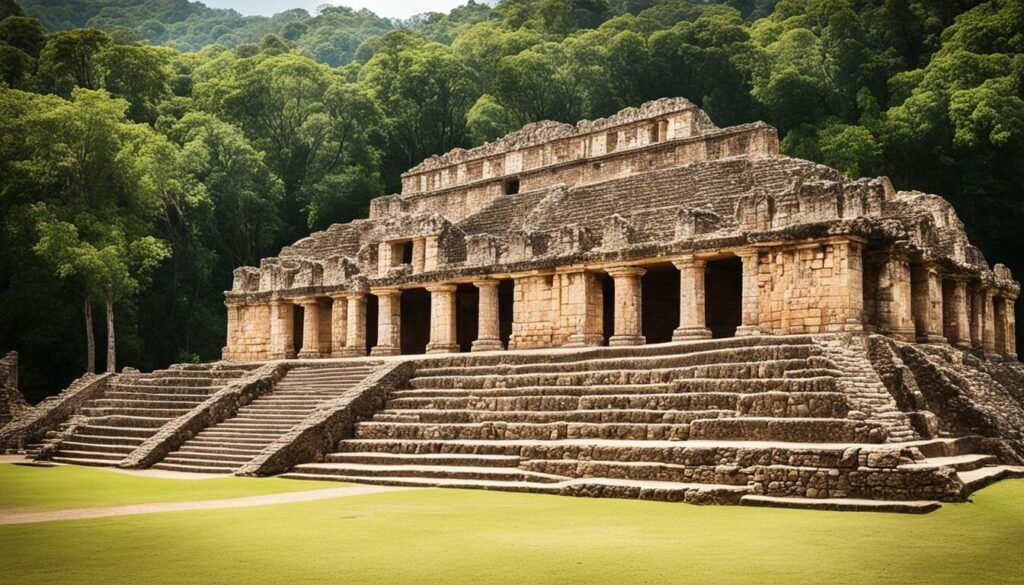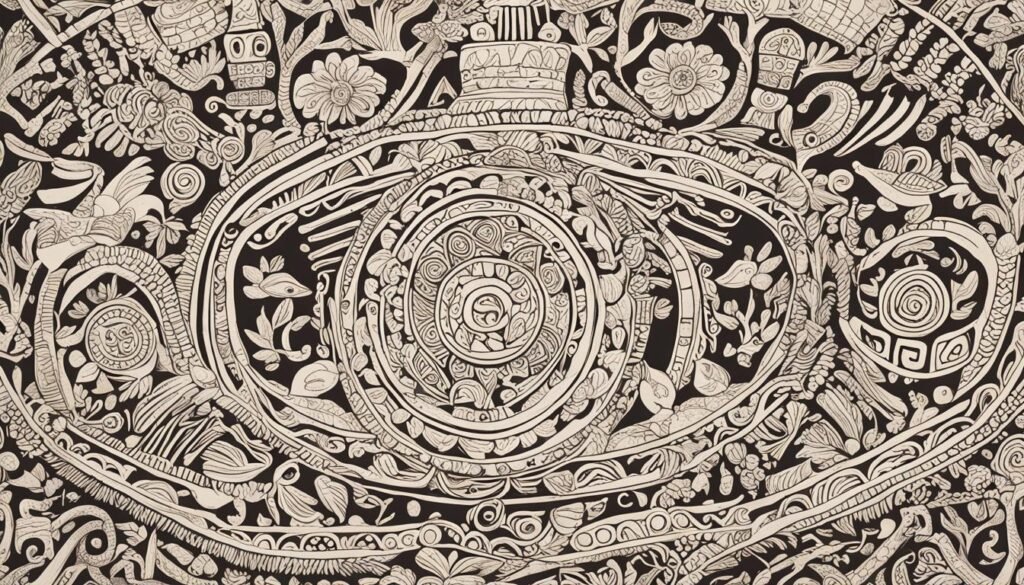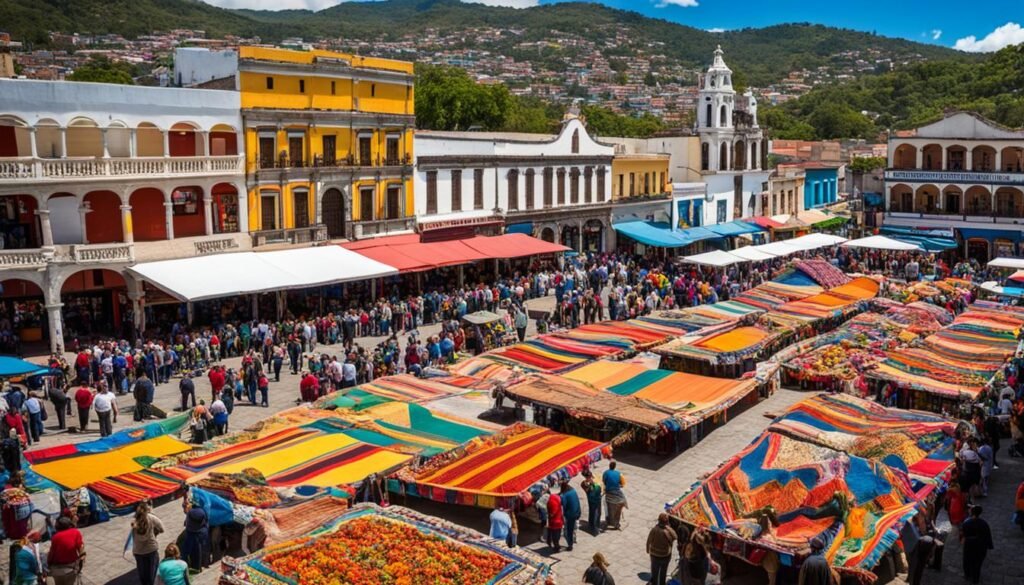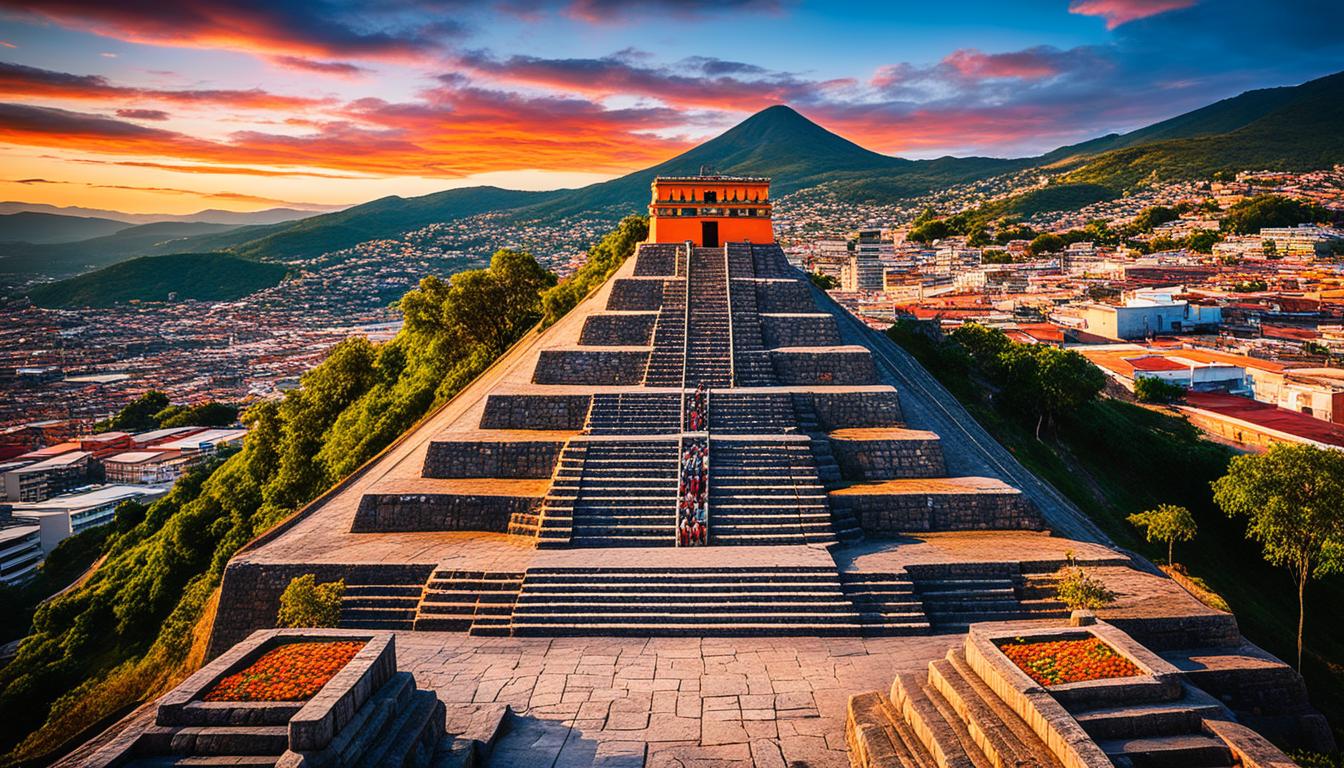Did you know that Honduras boasts over 400 documented archaeological sites, offering a treasure trove of insights into the rich Mesoamerican civilizations that once flourished in the region? As the southern border of Mesoamerica, Honduras stands as a fascinating crossroads where the influential Maya and Nahua cultures converged, leaving behind a legacy of architectural marvels, sophisticated art forms, and technological advancements that continue to captivate researchers and visitors alike.
Honduras marks the southern border line of Mesoamerica, making it an interesting place to study the cultural interaction between Mesoamerica and lower Central America. Recent research indicates considerable cultural diversity in Honduras, including both Maya cultures such as those found around the area of Copan and Non-Maya cultures, as well as blends of the two. The territory of current Honduras was inhabited by two culturally distinct peoples: the Maya civilization and the Nahua, with Mesoamerican influence remaining the dominant influence in the region.
Key Takeaways
- Honduras is a crossroads of Mesoamerican civilizations, with both Maya and Nahua cultures influencing the region.
- Over 400 documented archaeological sites in Honduras offer insights into the rich cultural heritage of the area.
- The Maya and Nahua civilizations left behind a legacy of architectural marvels, sophisticated art forms, and technological advancements.
- Copan is a renowned center of Mayan arts and sciences, showcasing the region’s cultural achievements.
- Honduras’ strategic location at the southern border of Mesoamerica makes it a fascinating area for studying cultural interactions and influences.
Introduction to Mesoamerican Civilization in Honduras
Honduras, a Central American nation, has a rich tapestry of ancient cultures that have deeply influenced its history. The territory of modern-day Honduras was once home to two distinct civilizations: the Maya civilization and the Nahua culture. While these cultures had their own unique identities, the overarching Mesoamerican influence remained the dominant force in shaping the region’s pre-Columbian history.
Influence of Maya and Nahua Cultures
The archaeological sites of Yarumela, Tenampua, and Los Naranjos bear witness to the pre-Columbian Mesoamerican influence that prevailed during the late pre-classic and mid-classic periods. This influence is particularly evident in the impressive pyramidal structures found at these sites, such as the renowned “El Cerrito” at Yarumela, standing over 20 meters tall.
Territorial Extent of Mesoamerican Influence
The Mesoamerican influence extended far beyond the borders of modern-day Honduras, as evidenced by the cultural exchanges and trade routes that connected the region to other Mayan and Mesoamerican centers, such as Tikal and Teotihuacan. This cultural diversity and interconnectedness played a pivotal role in shaping the pre-Columbian history of Honduras.
Archaeological Sites and Cultural Achievements
Mesoamerican influence can be clearly observed in the archaeological sites of Yarumela, Tenampua, and Los Naranjos, which date back to the late pre-classic period and mid-classic period. These sites showcase the architectural prowess of the ancient civilizations, particularly in the construction of pyramidal structures. The impressive Pyramid 102 in Yarumela, standing over 20 meters high, is a testament to their engineering skills and can be seen from almost anywhere in the valley. The largest structure, known as “El Cerrito,” is the equally impressive Structure 101 of Yarumela, a remarkable pyramidal structure that dominates the landscape.
Copan: A Center for Mayan Arts and Sciences
Copan, a renowned ancient Mayan city, was a vibrant center for arts and sciences. Greatly influenced by other Mayan and Mesoamerican regions, such as Tikal and Teotihuacan, Copan flourished due to its strategic location along extensive trade routes that connected the Valley of Mexico to central Honduras and the Lencan region. This cultural exchange led to a rich tapestry of Mayan arts and sciences that can still be admired in the Copan Ruins today.

Agriculture and Irrigation Systems
The Mesoamerican civilizations in Honduras were driven by the development of a varied agriculture, including crops such as beans, cocoa, and chili. They had large irrigation systems that allowed them to guarantee adequate food for their populations within the Mesoamerican area of influence.
In the region east of the great transversal depression of Honduras and next to the Caribbean Sea, they also cultivated yam or mountain cassava, alongside hunting and fishing, which characterize the Circuncaribe cultural influence. They were also growers of fruits native to the continent such as Papaya, Pineapple, Tomato and Avocado, which played an important role in their economy.
The development of these advanced agriculture and irrigation systems was a hallmark of the Mesoamerican civilizations in Honduras, allowing them to thrive and support their growing populations. These practices were a key component of the Mesoamerican cultural influence in the region.
Artistic Expressions and Ceramics
The Mesoamerican civilizations in Honduras were renowned for their artistic prowess, particularly in the realms of textiles, ceramics, and architecture. These ancient cultures applied techniques of great perfection, creating works that were not only functional but also visually stunning, adorned with illustrations representing humans and animals.
Textiles, Ceramics, and Architecture
The Mesoamerican people in Honduras developed an intricate and diverse trade in textiles and ceramics, showcasing their remarkable artistic expressions. These art forms were highly prized and played a significant role in the cultural exchanges throughout the region. Additionally, architecture held a prominent place in these civilizations, with the Maya architecture being the most advanced in the national territory. The ruins of Mayan cities like Copan and El Puente, as well as numerous mounds scattered across the land, stand as a testament to the architectural prowess of the Mesoamerican cultures.

The artistic and cultural achievements of the Mesoamerican civilizations in Honduras continue to captivate scholars and enthusiasts alike, offering a glimpse into the rich tapestry of their heritage and the enduring legacy they have left behind.
Scientific Advancements and Writing Systems
The Mesoamerican civilizations in Honduras were true pioneers in the realm of scientific advancements. Their achievements in mathematics, astronomy, and engineering were truly remarkable. These ancient cultures employed their scientific prowess in the construction of grand cities, aqueducts, and even complex systems to track the movement of celestial bodies like Venus.
The Mesoamerican people’s writing systems were also highly developed, with the Mayan script boasting over two thousand unique characters, each representing a distinct word, element, or phrase. This sophisticated writing system allowed for the recording of important historical events, religious beliefs, and cultural practices, preserving the rich heritage of these civilizations.
Beyond their advancements in writing, the Mesoamerican cultures also made significant strides in the fields of mathematics and astronomy. Their ability to accurately calculate the movements of the stars and planets, as well as develop complex calendars, is a testament to their scientific acumen. These achievements were not merely academic pursuits, but were integrated into the very foundations of their societies, shaping their architecture, engineering, and cultural practices.
Trade and Economic Activities
The economy of the Mesoamerican societies in Honduras was largely based on the cultivation of fruits and vegetables. Archaeological evidence reveals the existence of trade routes and commercial exchanges between various towns, such as Yarumela, which was a key center for the trade and exchange of goods from diverse cultural regions. These Mesoamerican civilizations engaged in the import of jewelry from Guatemala and beans from the Yucatán Peninsula in Mexico, including the prized cocoa.
The cultural contact facilitated through these trade networks extended from the northern reaches of the Mexican valley to encompass present-day Nicaragua and the Caribbean. Precious artifacts of jade and metals found in archaeological sites within Mayan cities like Copan Ruinas and El Puente indicate that these civilizations maintained firm control over the extensive trade routes during the classical period.
Trade Routes and Cultural Exchange
The dynamic trade activities among the Mesoamerican civilizations in Honduras fostered a vibrant cultural exchange. The import and export of goods from distant regions allowed for the dissemination of ideas, technologies, and artistic expressions, ultimately shaping the rich cultural tapestry of the region. These trade routes and economic activities served as conduits for the cross-pollination of Mesoamerican civilizations and the flourishing of cultural exchange.
Religious Beliefs and Deities
The indigenous peoples inhabiting the territory of modern-day Honduras embraced a rich tapestry of polytheistic religions and hierarchical deities. These Mesoamerican cultures, including the Maya and Lenca, revered a pantheon of gods and goddesses that governed various aspects of their lives and the natural world.
Polytheistic Religions and Hierarchical Deities
The Mayan region of Honduras shared similar religious practices and deities with the broader Mesoamerican civilizations. At the heart of these belief systems was a polytheistic structure, where multiple divine entities were worshipped, each with specific domains and responsibilities. The Lenca people, indigenous to Honduras, also embraced a hierarchically organized pantheon, with deities such as Itanipuca (the great earth mother), Ilanguipuca (the great sky father), and Icelaca (the lord of seasons).
These complex religious beliefs were woven into the fabric of Mesoamerican cultures, shaping their worldviews, rituals, and social structures. The reverence for these hierarchical deities and polytheistic practices was a testament to the rich spiritual heritage of the indigenous peoples of Honduras.
Toltec and Circum-Caribbean Influences
Honduras, a land rich in cultural diversity, has long been influenced by the Toltec civilization and the broader Circum-Caribbean region. In the northwestern section of the country, villages with Toltec influences predominated, including the Náhuatl people who lived in the valley of Naco and Trujillo, the Ch’orti’ located in Cortés, Copán, and Ocotepeque, and the Lencas, who extended their reach across the departments of Santa Bárbara, Lempira, Intibucá, La Paz, Comayagua, Francisco Morazán, and Valley, as well as part of modern-day El Salvador.
Interestingly, the rest of Honduras was inhabited by indigenous communities from the southern continent, with nomadic and semi-nomadic cultures, such as the Xicaques, Pech people, Tawahka, and Miskito people, who make up the majority of the country’s population. This rich tapestry of Toltec influence, Circum-Caribbean influence, and diverse indigenous cultures has shaped the unique cultural heritage of Honduras, making it a fascinating destination for scholars and travelers alike.

Honduras: Mesoamerican archaeology Tegucigalpa Honduras
Honduras occupies a unique position in the Mesoamerican region, serving as the southern border of this ancient cultural realm. Recent archaeological discoveries have shed light on the diverse cultural tapestry that once thrived in this Central American nation, blending the influences of both Maya and non-Maya civilizations. The capital city of Tegucigalpa, in particular, has emerged as a hub for the study of Honduras’ pre-Columbian history.
Situated at the crossroads of Mesoamerican and lower Central American cultures, Honduras boasts a rich archaeological landscape that continues to captivate researchers. From the iconic Maya ruins of Copán to the lesser-known but equally intriguing sites like Yarumela and Tenampua, the country’s heritage reflects the intricate web of interactions that once defined the region. Tegucigalpa, as the modern-day capital, has become a focal point for the exploration and preservation of this remarkable past.
As scholars delve deeper into Honduras’ pre-Columbian history, they uncover a tapestry of cultural exchanges, scientific advancements, and artistic expressions that once thrived in this corner of Mesoamerica. From the sophisticated irrigation systems that sustained agricultural communities to the captivating ceramic traditions and architectural marvels, the legacy of Honduras’ past continues to resonate in the present, offering invaluable insights into the dynamic nature of Mesoamerican civilization.
Lenca Civilization and Influence
The Lenca people have long been a significant presence in the pre-Columbian history of Honduras. As the largest indigenous population in the country, the Lenca civilization played a crucial role in shaping the region’s cultural landscape. Their origins and territorial extent have been the subject of much scholarly debate, but their impact on the indigenous cultures of Honduras is undeniable.
Origins and Territorial Extent of the Lencas
Although scientific controversies exist regarding the descendants and origins of the Lenca people, they are widely considered to be the direct heirs of the Maya civilization. Unlike the Maya, the Lenca did not participate in the exodus that ultimately led to the demise of the ancient Mayan empire. At the time of the Spanish arrival, the Lenca were well-established throughout the region that now encompasses the modern-day Republics of El Salvador and Honduras.
The Lenca civilization was known for its sizeable population centers, with an average of 350 houses and more than 500 people in each settlement. This level of organization and cohesion suggests that the Lenca people had a sophisticated understanding of their environment and the resources available to them. Their ability to sustain large communities is a testament to their agricultural and social prowess, which likely contributed to their enduring influence in the region.

Nomadic and Semi-Nomadic Cultures
Beyond the Mesoamerican civilizations that thrived in Honduras, the country is also home to a diverse array of nomadic and semi-nomadic indigenous groups. These include the Xicaques, Pech people, Tawahka, and Miskito people, who make up a significant portion of the nation’s population.
These nomadic cultures and semi-nomadic societies have long been an integral part of Honduras’ cultural fabric, maintaining their distinct traditions, languages, and ways of life. Their communities, often situated in remote or rugged areas, are governed by principles of communal production and collective stewardship of the land.
The rich cultural diversity of these nomadic and semi-nomadic groups is a testament to the resilience and adaptability of indigenous communities in Honduras. Their deep connections to the land and their commitment to sustainable practices have allowed them to thrive in the face of social, economic, and environmental challenges.
As Honduras continues to evolve, the preservation and recognition of these nomadic and semi-nomadic cultures remain crucial to maintaining the country’s vibrant cultural heritage and ensuring the well-being of its indigenous populations.
The Spanish Conquest and End of Pre-Hispanic Honduras
The era of pre-Hispanic Honduran history came to a close in 1524 with the arrival of Spanish conquistadors. Following the fall of the Aztec Empire in 1521, Gil González Dávila became the first Spaniard to reach Honduras for conquest purposes. He faced a well-organized and violent indigenous resistance, determined to protect their lands and way of life.
Soon after, Hernán Cortés sent two expeditions to Honduras, led by Pedro de Alvarado and Cristóbal de Olid. During Cortés’ two-year stay, he introduced cattle and fruits from Spain, founded the town of Natividad near Puerto Caballos, and appointed Hernando de Saavedra as the Governor of Honduras, instructing him to treat the indigenous population with respect, allowing some to retain their lands and properties.
The Spanish conquest marked the end of the pre-Hispanic era in Honduras, as the indigenous cultures and civilizations were gradually subsumed under the colonial administration. This period saw a clash between the Spanish ambitions for expansion and the fierce resistance of the native Honduran populations, who fought to preserve their autonomy and way of life.
Conclusion
Honduras marks the southern border of Mesoamerica, making it a vital region for studying the cultural interaction between Mesoamerican and lower Central American civilizations. The territory was home to diverse groups, including the Maya, Nahua, and blends of Mesoamerican influences. Extensive archaeological sites, such as Copan, Yarumela, and Tenampua, showcase the impressive achievements of these pre-Columbian societies in architecture, art, science, and trade.
Mesoamerican archaeology in Honduras has unveiled a rich tapestry of cultural diversity, scientific advancements, and artistic expressions that flourished in the region prior to the Spanish conquest. The Lenca civilization, as well as nomadic and semi-nomadic groups, also left their mark on the region’s pre-Columbian history. However, this vibrant cultural heritage was ultimately impacted by the arrival of the Spanish in the 16th century, marking the end of pre-Hispanic Honduras.
The study of Mesoamerican archaeology in Honduras provides invaluable insights into the complex and dynamic nature of pre-Columbian societies, their interactions, and their enduring legacies. As we continue to unravel the mysteries of this region, we gain a deeper appreciation for the cultural diversity and scientific achievements that once flourished in what is now modern-day Honduras.
Source Links
- Pre-Columbian Honduras – https://en.wikipedia.org/wiki/Pre-Columbian_Honduras
- Overview – https://www.floridamuseum.ufl.edu/latinarch/honduras/overview/
- Learn About a Lost City Discovered in the Honduran Rain Forest – https://www.nationalgeographic.com/adventure/article/150302-honduras-lost-city-monkey-god-maya-ancient-archaeology


